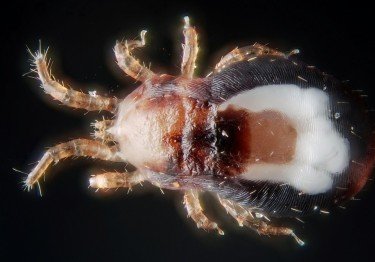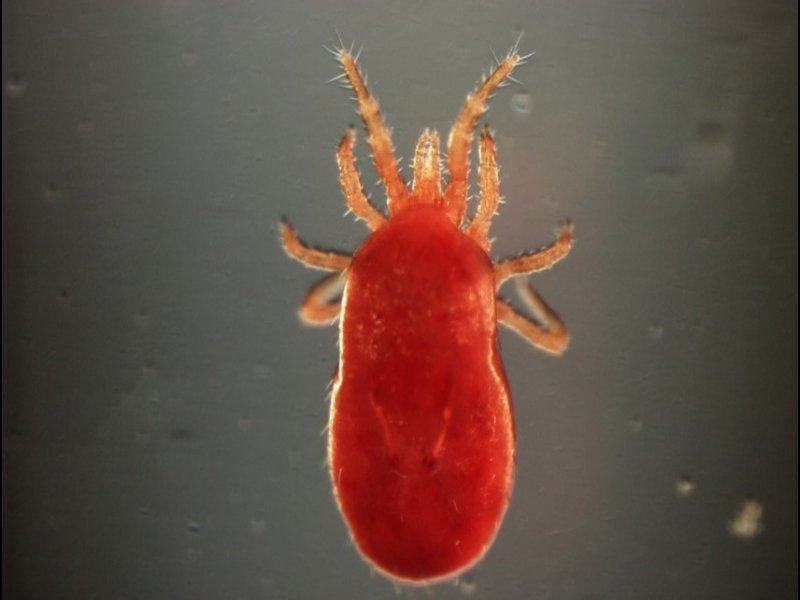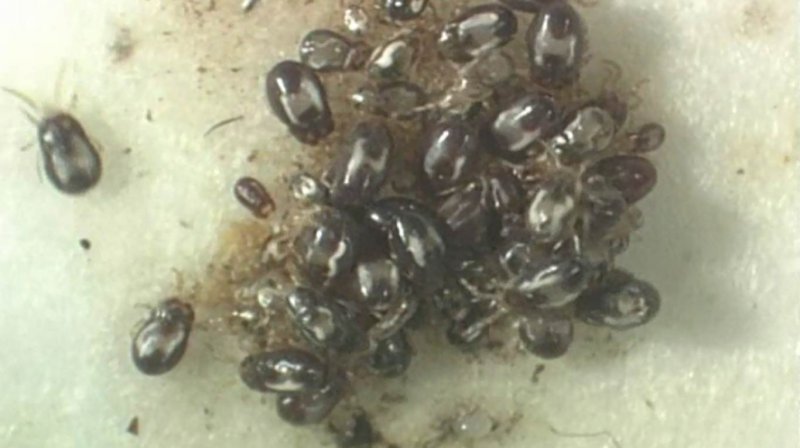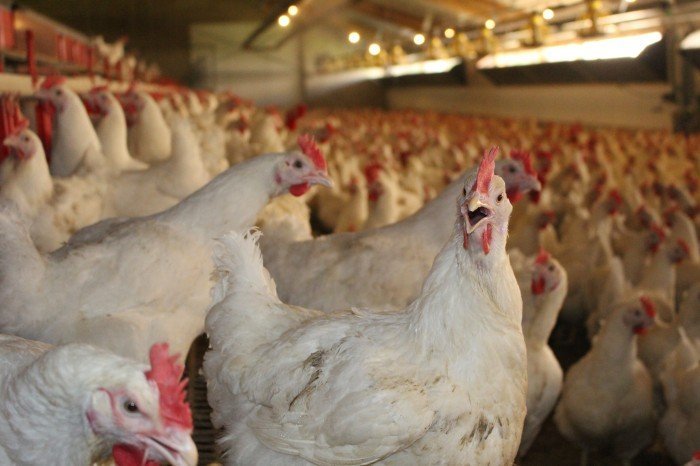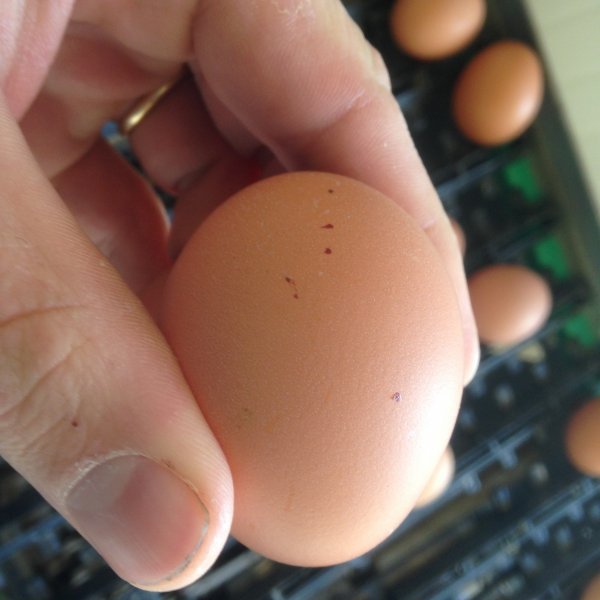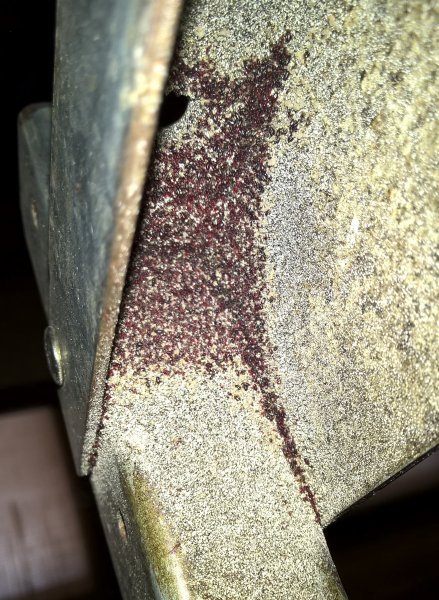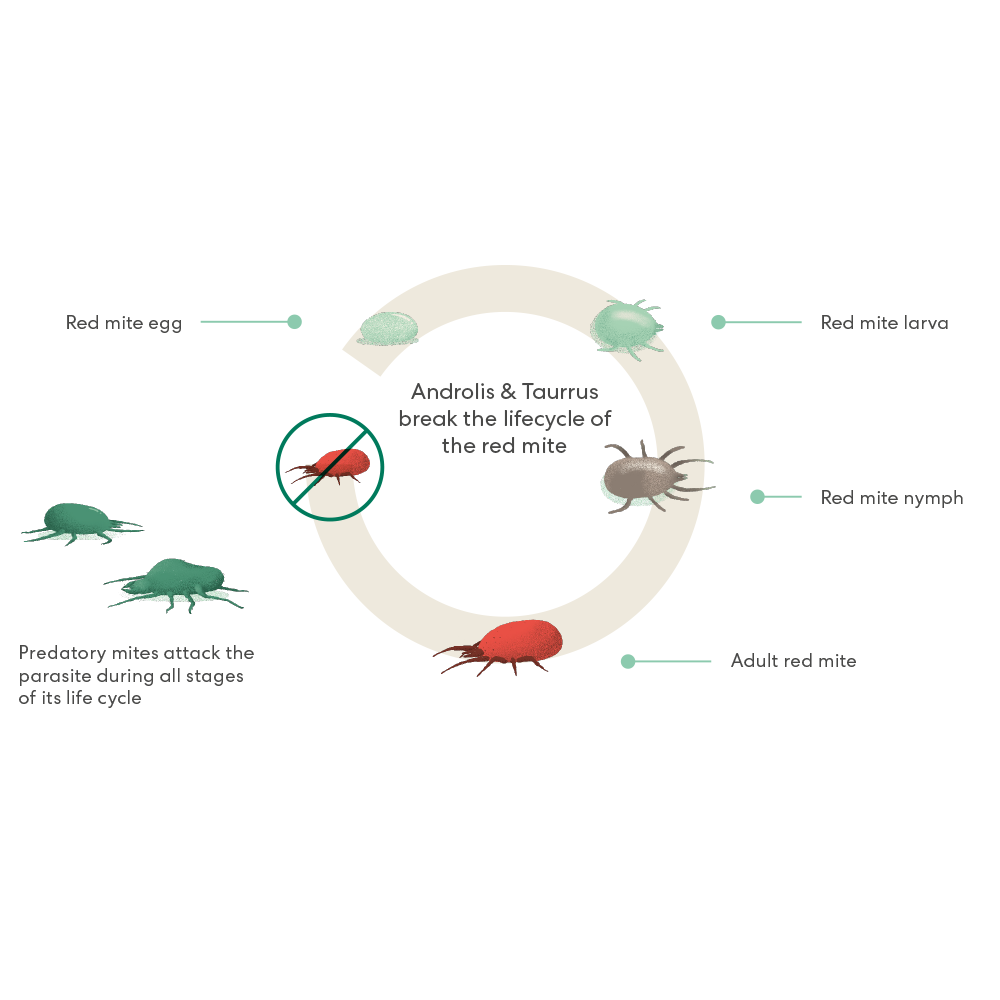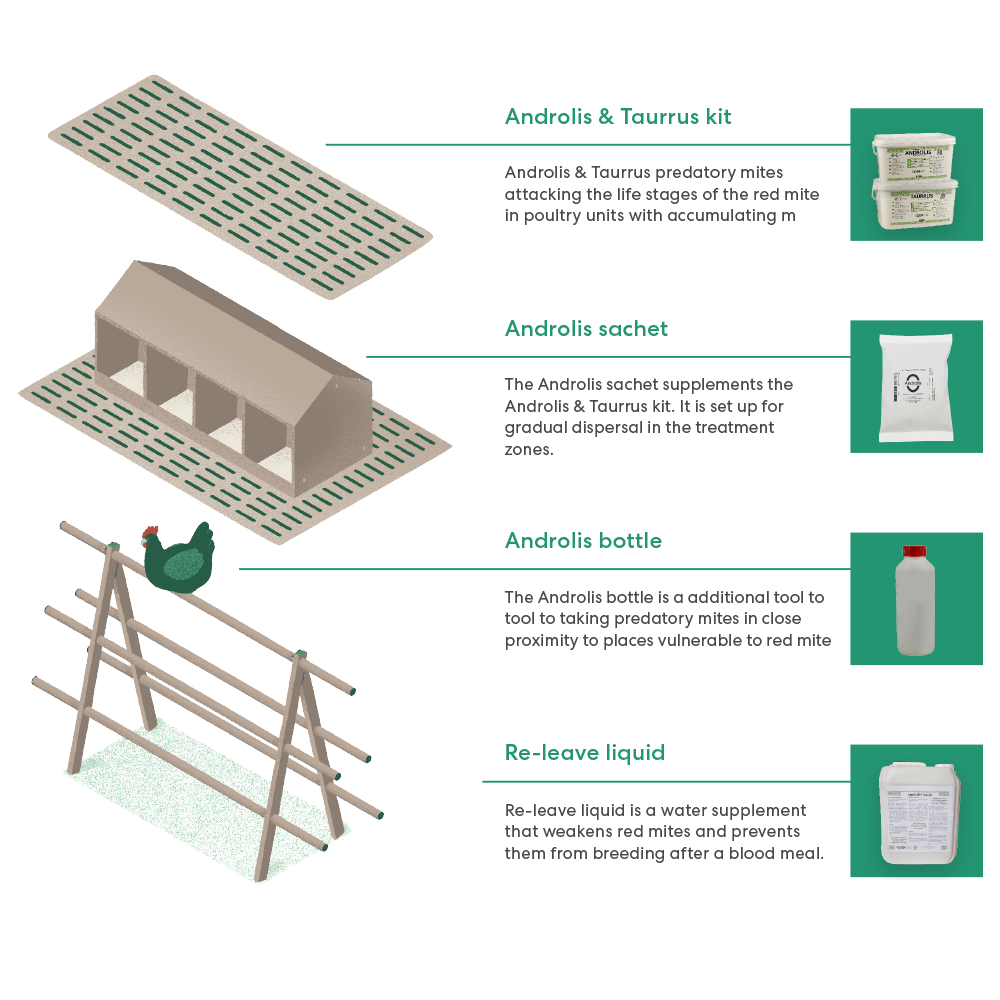Egg: is oval and white and measures 0.2 to 0.4 mm. They hatch 48 hours after laying at a temperature of 25°C. These eggs are laid scattered around the hens. They can also be found in quantities as clusters.
Larva: is white and has 3 pairs of legs. It moults into a protonymph in 24 hours at 25°C. The larva is mobile but slow. They're not taking a blood meal yet.
Nymphs: are whitish to greyish and, like the adults, have 4 pairs of legs. Two stages: protonymph and deutonymph. Each stage performs a blood meal. The nymphs are very mobile and spread throughout the habitat of the hens.
Adults: Both males and females feed on blood. The male performs only one blood meal, the females after each spawning. The male is bright red and stays red. Females change from red to dark gray or black depending on their condition. The female lays about 30-35 eggs in her lifetime. From egg to adult, the life cycle can be completed in 7 days at 25 ºC. The population can double in a
short time.


